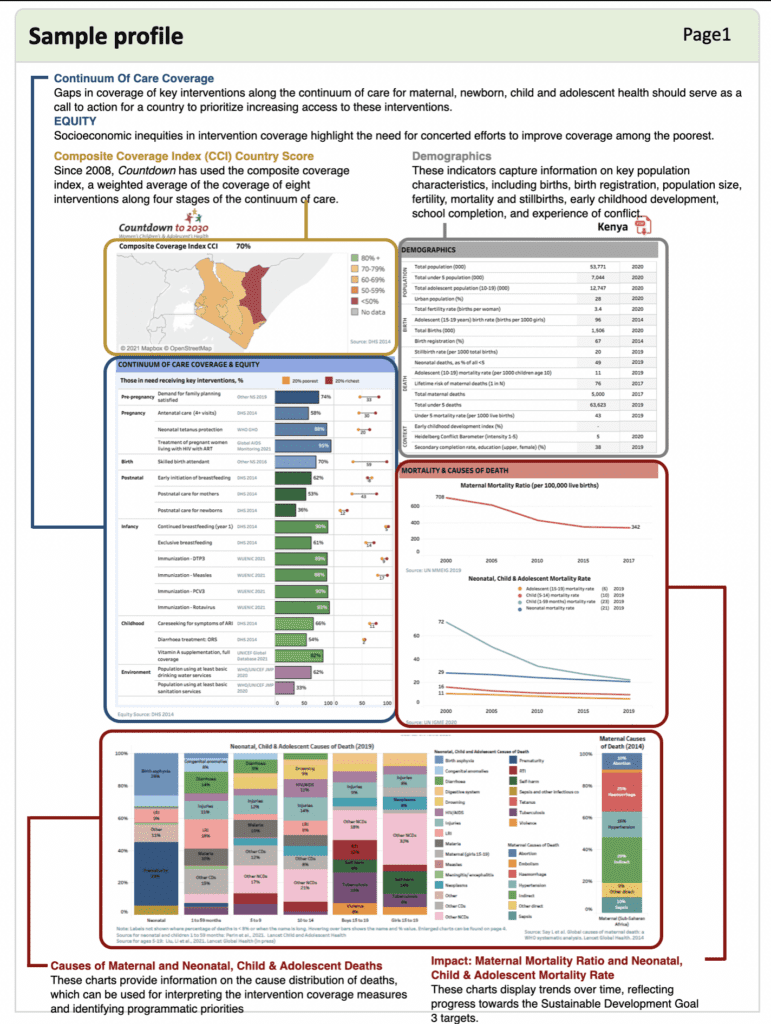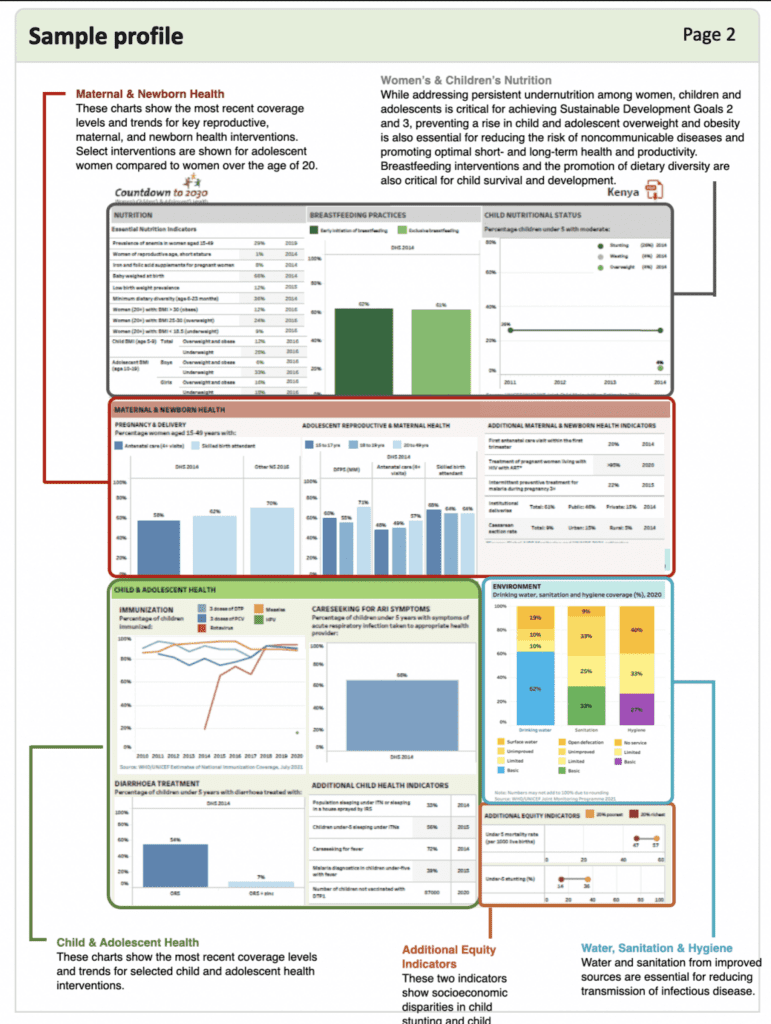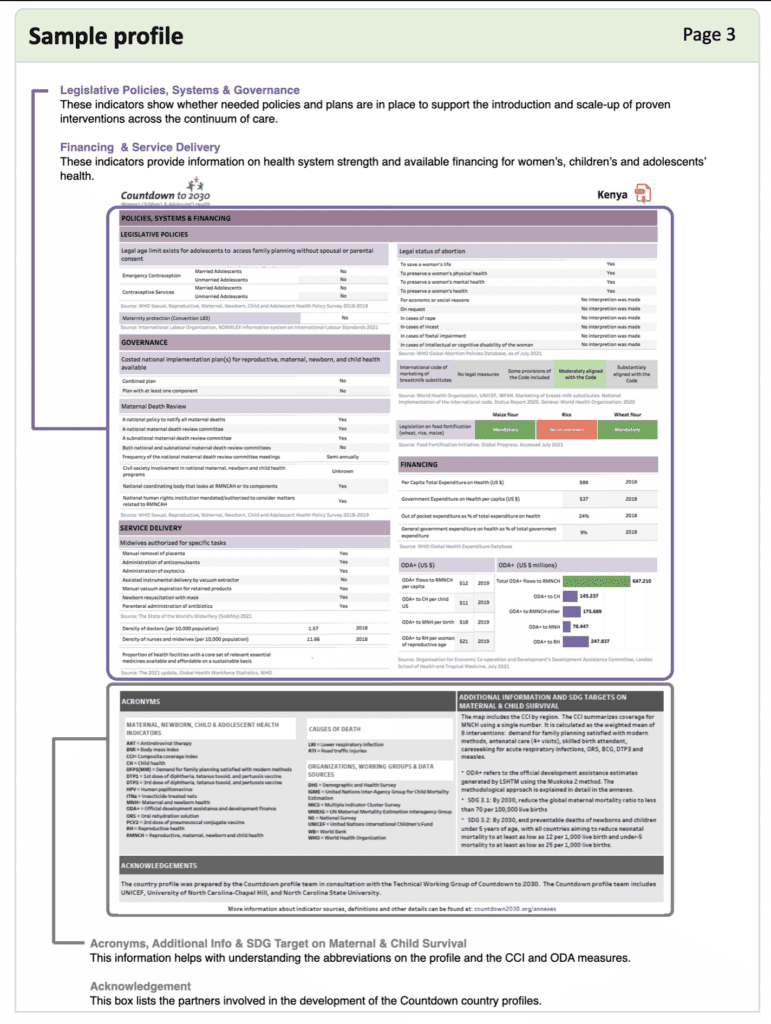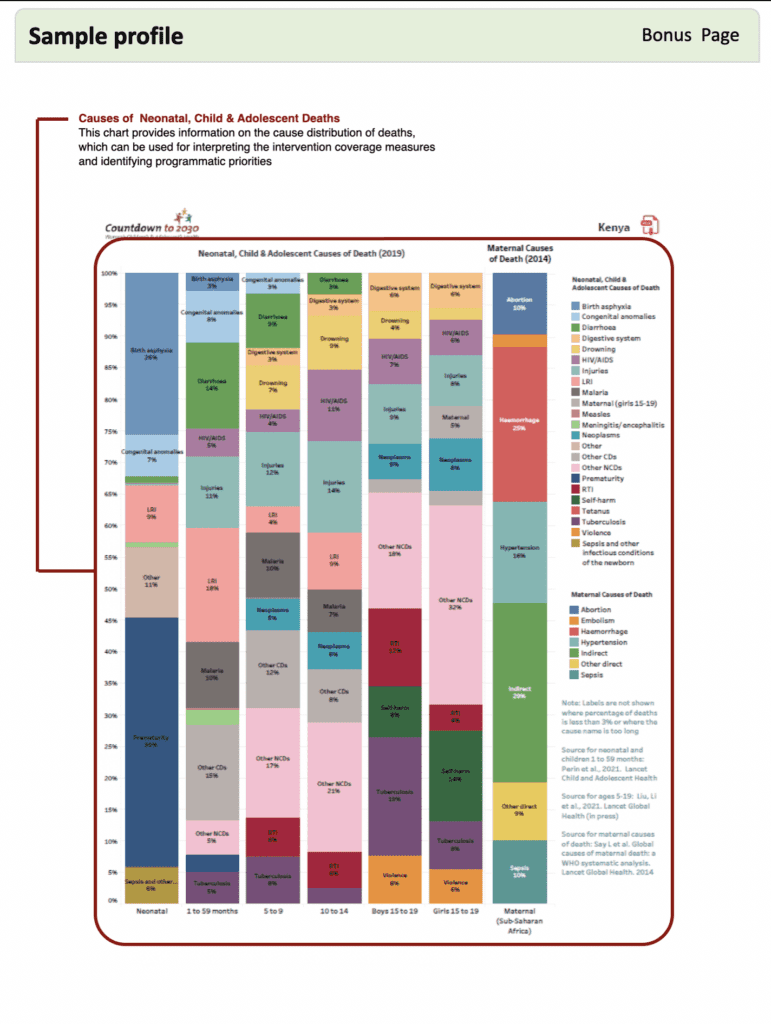Tutorial
Overview
Each country profile includes four pages. Once you select a country, you will be taken to a webpage with a navigation bar at the top that allows you to select each one of these four pages. The online versions of the country profiles include interactive functions. Scrolling over the data or year columns for the indicators reveals a tool tip where metadata and other information are shown. You can also print the full four-page profile by clicking the print button. The Countdown annexes are accessible from the country profile pages and here.
The Countdown profile dataset that includes all low-and middle-income countries is available here. Datasets for each individual country can be downloaded from here.
Reviewing the information
The first step in using the country profiles is to explore the range of data presented: demographics, mortality, nutritional status, coverage of evidence-based interventions, socioeconomic equity in intervention coverage, coverage of environmental services, and information on health policies, systems, and financing. Key questions in reviewing the data include:
- Are trends in mortality and nutritional status showing improvements? How much progress is necessary to reach Sustainable Development Goal 2 and 3 targets?
- How high is coverage for each intervention? Are trends progressing towards universal coverage? Are there gaps in coverage for specific interventions or concerning downward trends in coverage?
- How equitable is intervention coverage? Are certain interventions particularly inaccessible for the poorest segment of the population?
- Are key policies and systems measures in place to support equitable implementation of health programs? Is there adequate funding to achieve universal coverage of maternal, newborn, child and adolescent health interventions?
Identifying areas to accelerate progress
The second step in using the country profiles is to identify opportunities to address intervention coverage gaps and accelerate progress in improving coverage and health outcomes across the maternal, newborn, child and adolescent continuum of care. Questions to ask include:
- Are the intervention coverage data consistent with the epidemiological situation? For example:
- If pneumonia deaths among children under five years of age are high, are coverage levels low for care-seeking for symptoms of acute respiratory infections? What policy and systems measures are needed to improve careseeking and timely treatment of sick children? Is the percentage of child deaths due to diarrhoea consistent with the coverage levels for treatment with oral rehydration solution and zinc and improved water sources and sanitation facilities?
- Does lagging progress on reducing maternal and neonatal mortality reflect low coverage of family planning services, antenatal care visits, and skilled birth attendant, and are the necessary service delivery systems and policy frameworks in place to facilitate the scale up of these interventions??
- Do any patterns in the intervention coverage data suggest clear action steps? For example, coverage for interventions involving treatment of an acute need (such as treatment of childhood diseases and childbirth services) is often lower than coverage for interventions delivered routinely through outreach or that can be scheduled in advance (such as vaccinations). These differences suggest that health systems need to be strengthened to improve access to care by, for example, training and deploying adequate numbers of skilled health workers and ensuring health care facilities are sufficiently stocked with essential medicines and equipment.
- Do the gaps and inequities in coverage along the continuum of care suggest the need for prioritizing specific interventions and increasing funding for them? For example, are countries developing programs that target the poor to address disparities in coverage between the richest and poorest populations? Is universal access to skilled childbirth and immediate postnatal care being prioritized in countries with large coverage gaps in interventions delivered around the time of birth?
Sample country profile



